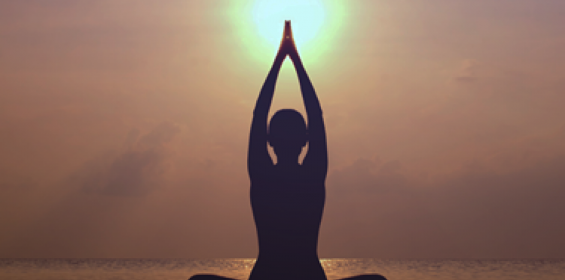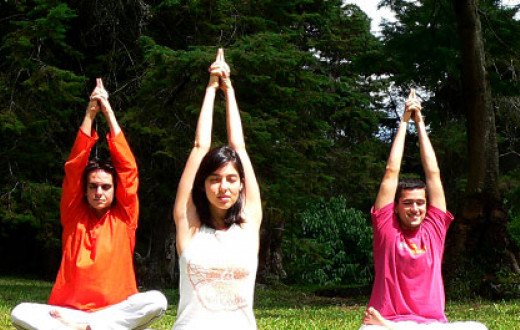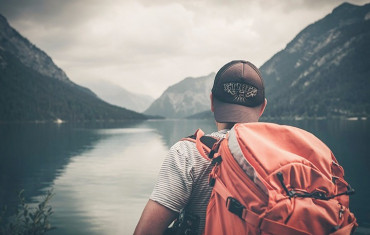Amazing facts about India.
A Sri Lankan sojourn in the footsteps of Ramayana
There are many layers to a person, it is often said. A person has a past, present and a future - impressions of each changes one’s destiny forever. A country has many layers too which determine the now. The landscape is dotted with colors from history, economy, cultures - giving each place its distinct identity.
Imagine taking different frameworks and creating imaginary imprints on each country - history trails will meet significant spots of economy to top-ranking tourist destinations. Perhaps the emerging patterns of criss-cross will paint the true identity of a country.
For now, each country has its place in the global sun, even as time and tide continue spinning earth on its axis. For now, let’s walk in the footsteps of the Ramayana history on the island nation, that is known as the pearl of the Indian ocean.
‘The most delightful conditions under which man can desire to live’
“There is probably no other place in the world that possesses such remarkable combination of attractions, 7,000 miles from London, 6 degrees from the equator, and 6,200 feet above the sea, the unique retreat, whose precious attributes were hitherto particularly inaccessible, must now become familiar to thousands.
Egypt has its healing climate, the Englandine its lovely scenery, Brazil its wooded wilderness, the Alps their flowery meadows, and Peru its high plateau, but here easy of access and freed from any serious drawback are all these and a hundred other attractions, forming a combination of the most delightful conditions under which man can desire to live.”
- Henry W Cave, an Englishman and a member of the Royal Asiatic Society, describes the beauty of Sita Eliya, a popular spot in Sri Lanka. Mr. Cave authored photograph-rich books, such as Picturesque Ceylon, The Ruined Cities of Ceylon in the early 1900s.
The Ramayana is considered to be one of the oldest scriptures in the world, a story which spanned two countries - India and Sri Lanka. The trail across present day Sri Lanka, where the events, data, and facts from the text converge with local topology, language, customs and belief of the people across times lends credibility to the story as history.
An ancient name for Sri Lanka, Serendib was coined by the Arabs and Persians. It is a variation of the Indian moniker for Sri Lanka: Sidhaleepa, (the dwelling place of lion’s island.) In the 18th century, Horace Walpole created the word, serendipity, inspired by serendib.
The trails in both India and Sri Lanka show a convergence of literature with archaeology, geography, topography, and local tradition. As part of the trail of Ramayana in India, over 500 locations have been identified as places associated with events mentioned in the Ramayana text. In the island of Sri Lanka too, over 50 places have been identified. Some of these include:
Muneeswaram
As Rama was returning victorious from Lanka after slaying Ravana, He was burdened by guilt at having killed a learned scholar such as Ravana. Rama felt this burden, the Brahmahati Dosham, sin of killing a learned person, lightening and leaving Him as He came near Muneeswaram, in present day Chilaw.
The name Muneeswaram in Tamil is translated as “mun” meaning prior or earlier and “easwara” meaning Master or Lord i.e., the Earlier Lord.
Muneeswaram, one of the Pancha Ishwarams, is also located inland as compared to the other Shiva temples. All the other temples have legends of Ravana associated with them while it is believed that Muneeswaram was perhaps built even earlier as compared to these other Shiva temples.
The name Muneeswaram for this temple also seems to indicate that this Shiva temple was there prior to the arrival of Rama in Lanka and this tallies with the legend of Rama, Sita, and Lakshmana having halted here for offering obeisance to Lord Shiva on their return to Ayodhya.
This perhaps places the Muneeswaram temple as an antecedent of the Shiva temples in Sri Lanka.
Muneeswaram as the foremost Shiva temple is further substantiated by the belief of locals. According to them, this temple is regarded as the Kashi of Sri Lanka. Kashi, one of the most ancient and foremost Shiva temples in India, is one of the most prominent places of Hindu worship. It is believed that a visit to Kashi can relieve one of their sins and grant liberation. The Muneeswaram temple also has the same power.
Thirukoneswaram
Thirukoneswaram or Trincomalee as it is called today, is a natural deep-water harbor and had attracted great seafarers such as Marco Polo, Ptolemy, as well as traders from China and East Asia in the ancient times.
Thirukoneswaram is said to be the penultimate expression of devotion - where the worshipped Lord (Shiva) built a temple for Himself for his devotee, Ravana. Shiva was won over by Ravana’s deep devotion.
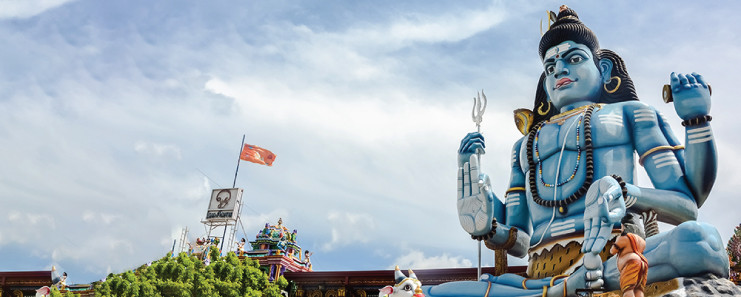
Thiruketheeswaram
Thiruketheeswaram is located near the town of Mannar in the northwest of Sri Lanka and is associated with the ancient port of entry called Mantotai.
In response to the prayer of Mandodari, Lord Shiva is said to have visited the island of Lankapuri at Thiruketheeswaram, in the form of a child and blessed Queen Mandodari and Ravana.
It is in commemoration of this visit of Lord Shiva to Lanka, that Queen Mandodari’s father, Mayasura, the legendary architect built the Thiruketheeswaram temple.

Ramboda & Ravanaboda Hills
On the way to Nuwara Eliya from Colombo, one comes across two series of hills with a big valley in between. These hills, on either side of the valley, are traditionally called by the locals as Ramboda on the Northern side and Ravanaboda on the Southern side.
Let’s go deeper into discovering amazing India! This country has a wealth of spiritual and wellness knowledge. Untap some of those secrets and discover your potential with these timeless wisdom nuggets. Know more at The Art of Living Meditation and Breath program.
Discover India's spiritual heritage and learn about the mind & breath. I'd like to know more>>
As the names suggest, the Ramboda hills was the camp of Rama’s army and the Ravanaboda hills, the military camp of Ravana’s army.
Nuwara Eliya
Near Nuwara Eliya, the premier hill station of Sri Lanka, there is an area locally called as Sita Eliya. The term Eliya in the Sinhala language meaning ‘open space’. In this open space in the forest slopes, there is a small stream flowing among the rocks. This area is believed to be the place where Sita rested, bathed, and spent Her time. This stream is in the midst of a beautiful forest.
This location has been identified as Ashoka Vatika of the Ramayana times.
The older temple here is called the Sitai Amman temple. Dedicated to Sita, it is considered to be the only such temple in the world. Large footprints by the river are believed to have belonged to Hanuman.
As per the Ramayana text, the reason why Ravana is said to have chosen Ashoka Vatika to keep Sita captive, is because of the salubrious climate and enchanting beauty of this hill station. Ravana hoped to persuade and win over Sita with the enchanting landscape of this area.
The Ashoka Vatika is described in great detail in the Sundara Khanda (verses 61, 62 and 63) in the Valmiki Ramayana.

Divurumpola
As per the Ramayana text, after the victorious battle, Rama came to
Ramayana in Lanka to meet Sita and asked Her to undertake the agnipariksha, a test by fire, to prove Her chastity.
As per local legends of Sri Lanka and monks of the local Buddhist monastery, Divurumpola, close to Sita Eliya, is the place where Sita’s agnipariksha is said to have taken place.
Divurumpola means “a place of oath” in the local Sinhalese language.
In this village, there is a platform to commemorate the place where Sita’s agnipariksha was conducted.
Interestingly, promises made at this site are still honoured by the local judiciary system.
Kelaniya
To the north of Colombo is the Kelaniya Buddhist temple. This temple has been identified as the site of the ancient palace of Vibhishana. Carvings to this effect are found on the outer wall of this temple.
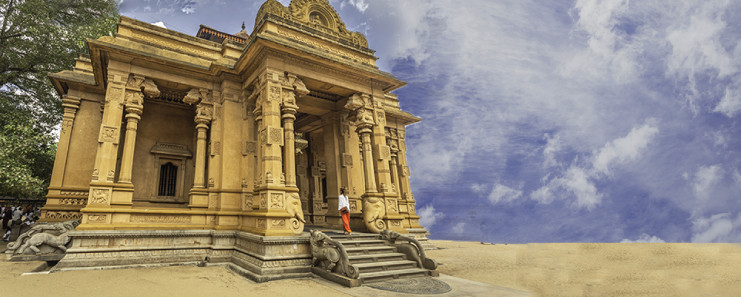
Beside this Buddhist temple is an exclusive shrine for Vibhishana. Even to this day, locals come here to pray to Vibhishana for quick and favorable settlement of disputes.
Buddha’s visit to Kelaniya
As per the Buddhist tradition of Lanka, Buddha is said to have visited Lanka three times. During one of His visits to Lanka, He is said to have visited Kelaniya too.
This monument is located on the banks of Kelani Ganga, one of the most important and perennial rivers of Sri Lanka.
Selalihini Sandesaya is a classical Sinhala poem, hailed as one of Sri Lanka’s most loved poems. The Sandeshaor message of the poem is addressed to Vibhishana and goes to describe the city of Kelaniya as, “the eternal city, regenerated from age to age, it was one of the cradles of civilization in ancient Lanka.”
Istripuram
Ravana built a network of caves or surangam in his capital for his quick and secretive movement through the various hills.
After the advent of Hanuman and his spotting of Sita at the Ashoka Vatika, Ravana shifted Her to Istripuram to keep Her hidden. Hence the name Istripuram, which means ‘place of the lady.’
Today, in Istripuram, as per the legends of Ravana, we find a wonderful labyrinth of caves.
The cave labyrinth opens out at very strategic places associated with Ravana such as,
- at Wariyapola in Matale, an area identified as part of Ravana’s airports
- a cave opening in Gaushala at Ragala, a place identified by locals as a dairy farm of Ravana
- at Kandy, in a spot currently inside the lake, which is a rather recent construction
- at Lagalle, regarded as the place where Ravana used to meditate
- on the roadside between Ramboda and Nuwara Eliya, the most beautiful spot in Sri Lanka near which was the Ashoka Vatika where Sita was lodged
- near Istripuram, where Sita was lodged after being detected by Hanuman
- at Sita Kottuwa, where stood the palace of Ravana, in which Sita was first housed. It is only when Ravana found Sita to be mournful and sad, that he shifted Her to the Ashoka Vatika in the hope that it would lift Her spirits and make Her more amenable to his advances.
Most of these openings have been lost either due to modern constructions of roads and buildings or due to being hidden in dense jungles. This cave labyrinth which is located basically in central Sri Lanka, a hilly region, seems to have been used for easy and quick transportation, by avoiding going up and down the various hills. It could also have been used as a secret underground passage.
A country revived
Sri Lanka has been hailed as the best country to visit in 2019 by Lonely Planet. This is no mean feat as the country completes almost a decade since the end of its civil war. Understanding the history of this stunning tourist destination will deepen your appreciation while travelling here. After all, you are walking in the footsteps of the ancients.
Based on inputs by @bharathgyan. This research team led by a passionate husband-wife duo unearth some of India’s untold stories and make them contemporary. Excerpts from their publications have been used. You can click here to buy any of their books on Indian civilization.
If you would like to experience travelling through such a trail, contact Sumeru Travels.

